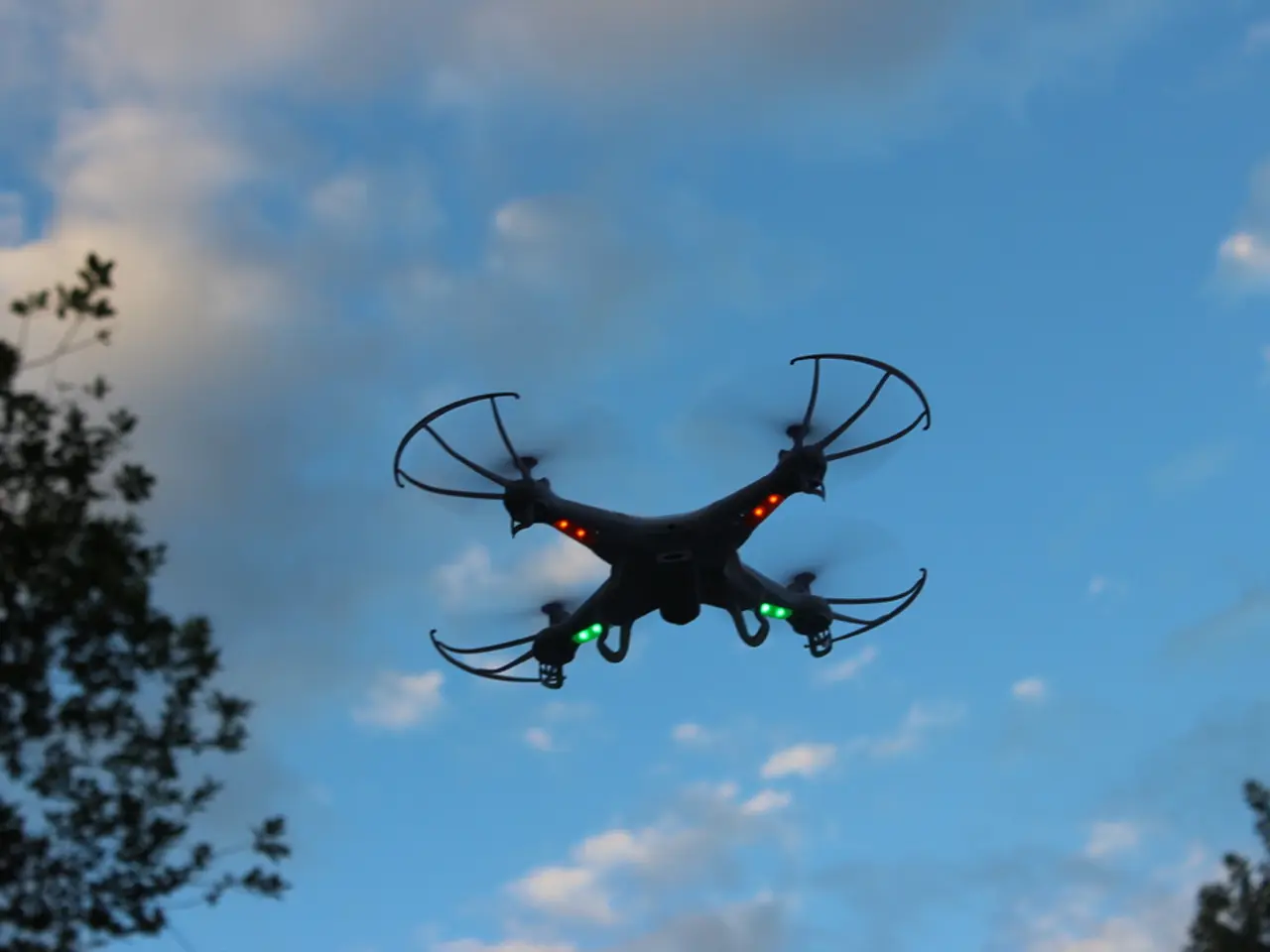Expanding Employment of Drones for Creative Aerial Videography
In the world of filmmaking, drones have become a game-changer, unlocking new realms of creativity and storytelling. This technology, which provides dynamic, bird's-eye perspectives that were previously difficult, expensive, or impossible to achieve with traditional equipment, expands creative horizons by enabling filmmakers to capture a wide range of unique aerial shots that enhance storytelling and emotional impact.
Drones offer filmmakers several key advantages that transform the visual narrative. New angles and perspectives, such as sweeping overhead views that establish scale, location, and context before dialogue begins, setting the tone of a scene effectively, are now achievable. Their altitude flexibility allows for cinematic yet intimate shots.
Dynamic movement and tracking, with precise control, smoothly track moving subjects, adding energy to chase scenes or emotional depth to character reveals, surpassing traditional static or handheld camera limitations. First-Person View (FPV) capabilities bring unprecedented fluidity and intensity to action sequences, flying through complex and tight spaces at speed, creating immersive shots that maintain audience immersion.
Creative Freedom and cost efficiency are also significant benefits. Drones reduce the need for expensive cranes, helicopters, or rigs, lowering production costs while increasing flexibility on-set. Lighter and more versatile than traditional aerial filming solutions, they let directors experiment more freely with visual storytelling.
Enhanced engagement and production value are further advantages. The unique aerial viewpoints can make films feel more visually striking and engaging, attracting audience attention through novel imagery and cinematic techniques.
However, filmmakers should be aware of privacy concerns and ensure they have consent when filming over private property. A drone with a long battery life is important for extended shoots without frequent interruptions. Models equipped with 4K or higher resolution cameras are recommended for crisp and clear imagery.
Insurance coverage is necessary to protect against potential liabilities in drone filmmaking. Utilizing ND filters helps in managing exposure, allowing for more control over shutter speed and motion blur. Filmmakers must stay informed about no-fly zones and maintain a clear line of sight with the drone.
To plan breathtaking aerial shots, filmmakers should pre-plan routes and ensure smooth transitions between shots using apps. Gimbal control can enhance the cinematic quality of drone footage by allowing for fluid camera movements. Navigating regulations is important in drone filmmaking, ensuring compliance with local laws and regulations.
Understanding the dynamics of natural light is crucial in drone cinematography, with early mornings and late afternoons (golden hours) offering soft, diffused lighting. A high-quality drone with a reliable gimbal system is essential for stability in drone cinematography. Mastering camera angles is equally important, with low-angle shots creating a sense of grandeur and top-down perspectives capturing intricate patterns and symmetry.
Incorporating speed variations can add dramatic effect and emphasis to the narrative. Drones enable filmmakers to capture sweeping aerial views with precision and ease, redefining how scenes are visualized. Extra batteries, ND filters, carrying case, and propeller guards are key pieces of gear to enhance the drone setup.
Together, these capabilities allow filmmakers to push creative boundaries, telling stories in visually compelling ways that connect deeply with viewers, effectively transforming the art and production of modern filmmaking. Filmmakers should obtain location-specific permissions from local councils or private property owners. Seamlessly weaving dynamic, bird's-eye perspectives into their narratives, filmmakers can now explore previously inaccessible locations.
- Drones, with their dynamic, bird's-eye perspectives, have transformed filmmaking, enabling filmmakers to capture unique aerial shots that enhance storytelling and emotional impact.
- Offering advantages such as new angles, precise control, creative freedom, and cost efficiency, drones have redefined visual narratives, providing filmmakers with a versatile tool for cinematography.
- Film techniques like sweeping overhead views, dynamic movement, and tracking, first-person view (FPV) capabilities, and enhanced engagement are made possible with the use of drones in movie production.
- By capturing breathtaking aerial shots with precision and ease, drones enable filmmakers to push creative boundaries, telling stories in visually compelling ways that connect deeply with viewers.
- To maximize the potential of drone filmmaking, filmmakers should stay informed about no-fly zones, maintain a clear line of sight with the drone, and obtain necessary permissions from local councils or property owners.
- Gimbal control, understanding natural light, and mastering camera angles are essential for creating high-quality drone cinematography, as are accessories like extra batteries, ND filters, carrying case, and propeller guards.




